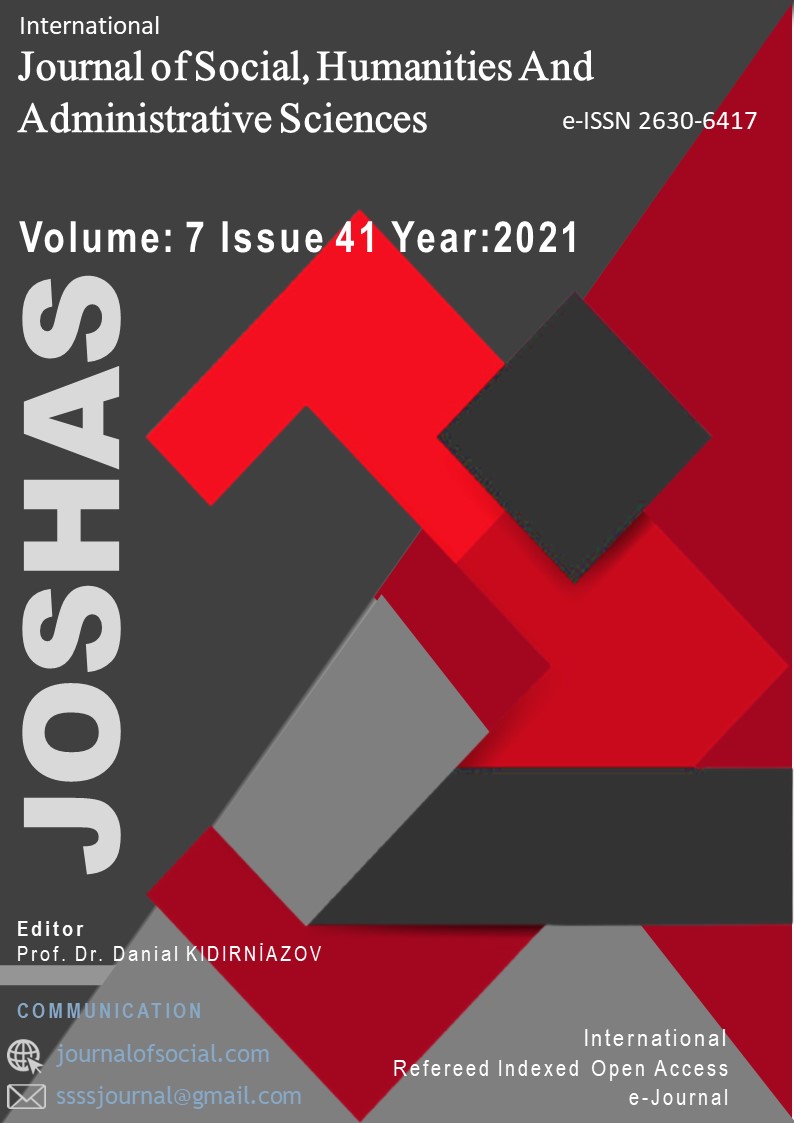Author :
Abstract
Anlatı, bilinen her insan toplumunda var olmuştur. Çevremizi algılamamızın önemli yollarından biridir ve insanların dünyayı anlamlandırmasının temel bir yoludur. Anlatı, deneyimlerimizi ve arzularımızı anlaşılır kılmak için kullanılan bir stratejidir. Metnin anlaşılırlığının bir koşulu olarak ortaya koyduğu dilsel ve mantıksal bir ilişkidir. Nesnelerin sunumunun ve sunulan nesnelerin nasıl algılanacağının ortaya çıkmasının bir yoldur. Bir anlatıyı, zaman ve mekânda meydana gelen sebep-sonuç ilişkisi içindeki olaylar zinciri olarak da düşünebiliriz. Sinema ise hem görsel hem işitsel bir anlatı sanatıdır. Film, duyusal olarak dünyayı algılamamıza katkıda bulunan bir araçtır. Film aracılığıyla dünyayı algılama sürecinde filmin iyi biçimlendirilmiş anlatı yapısını nasıl yarattığı ve bu anlatıyı izleyiciye nasıl sunduğu önemli rol oynamaktadır. Film bir performans çerçevesinde gerçekleştirilir ve metinsel bir formla yani senaryo ile ilişkilidir. Film, seslerin ve hareketli resimlerin fiziksel kaydına dayanan çok araçlı bir anlatı biçimidir yani senaryolar okumak için değil filmin çekilmesi için yazılan anlatılardır. Senaryo bir filmin aksiyon anlatısını ve diyalogunu içeren bir metindir. Yazarın senaryoyu maksimum dramatik efektle şekillendirmesine yardımcı olan paradigmalardan biri ise üç perdeli senaryo paradigmasıdır. Bu çalışmada anlatı kavramı, anlatının ontolojisi, film anlatısı ve üç perdeli yapı paradigmasının senaryo içerisinde nasıl yer bulduğu incelenmiştir.
Keywords
Abstract
Narrative has existed in every human society. It is one of the important ways how we perceive our environment and it is a fundamental way how to make sense of the world. Narrative is a strategy used to make our experiences and desires intelligible. It is a linguistic and logical relationship that the text puts forward as a condition of its intelligibility. It is a way how to reveal and how to perceive the objects. We can also think of a narrative as a chain of events in a cause-effect relationship that takes place in time and space. Cinema is a visual and auditory narrative art. Film is a tool that contributes how we perceive the world with our senses. In the process of perceiving the world through film, how the film creates a well-formed narrative structure and how it presents this narrative to the audience plays an important role. The film is realized within the framework of a performance and is associated with a textual form, namely the script (screenplay). Film is a narrative form based on the physical recording of sounds and motion pictures. In other words scripts are narratives written for filming, not for reading. A screenplay is a text that contains the narrative of action and dialogue of a film. One of the paradigms that helps the author to shape the screenplay with maximum dramatic effect is the three-act scenario paradigm. In this study, the concept of narrative, film narrative and the three-act structure paradigm are examined.
Keywords
- Aronson, L. (2010), The 21st Century Screenplay: A Comprehensive Guide To Writing Tomorrow’s Films.
- Aronson, L. (2010), The 21st Century Screenplay: A Comprehensive Guide To Writing Tomorrow’s Films. Australia: Allen & Unwin.
- Bordwell, D. (1985). Narration in the Fiction Film. The U.S.A: The University of Wisconsin Press.
- Bordwell, D. Ve Thompson, K. (2008). Film Art: An Introduction. New York: Mc Graw Hill Higher Education.Buckland, W. (2021). Narrative And Narration: Analyzing Cinematic Storytelling. New York: Columbia University Press.
- Branigan, E. (1992). Narrative Comprehension And Film. London, New York: Routledge.
- Branigan,E. (1984). Point of View in the Cinema A Theory of Narration and Subjectivity in Classical Film. Berlin, New York, Amsterdam: Mouton Publishers.
- Cook, D. A (2016). A History of Narrative Film. New York, London: W.W. Norton Company. Dethridge, L. (2003). Writing your screenplay. Sydney: Allen & Unwin.
- Fabe, M. (2004). Closely Watched Films An Introduction to the Art of Narrative Film Technique. Berkeley, Los Angeles, London: University of California Press.
- Field, S. (2012). Senaryo Yazımının Temelleri. İstanbul: Alfa Basım Yayım Dağıtım San. ve Tic. Ltd. Şti.
- Fossard, de E. ve Riber, J. (2015). Writing And Producing For Television And Film: Communication for Behavior Change. Volume 2, 2nd edition, New Delhi, Thousand Oaks, London: Sage Publications.
- Greenhalgh, T. ve Hurwitz, B. (1999). Why study narrative? İçinde Culture and Medicine. Volume 170. sf: 367-369.
- Herman, D., Jahn, M. ve Ryan, M.L. (2005). Routledge Encyclopedia of Narrative Theory, USA and Canada: Routledge Ltd.
- Hurbis-Cherrier, M. (2013). Voice and Vision: A Creative Approach to Narrative Film and DV Production. New York, London: Focal Press Taylor & Francis Group.
- Jahn, M. (2020). A Guide to Narratological Film Analysis. English Department, University of Cologne. http://www.uni-koeln.de/~ame02/pppf.pdf
- James, L. M., (2009). How to Write Great Screenplays And Get Them Into Production. United Kingdom:How To Books Ltd.
- Jung, B. (2010) Narrating Violence in Post-9/11 Action Cinema Terrorist Narratives, Cinematic Narration, and Referentiality. Germany: VS Research.
- Keen, S. (2003). Narrative Form. New York, Palgrave Macmillan.
- Markham, P. (2021). What’s the Story? The Director Meets Their Screenplay: An Essential Guide for Directors and Writer-Directors. London: Routledge.
- Rankin, J. (2002) What is Narrative? Ricoeur, Bakhtin, and Process Approaches. içinde Concrescence: the Australasian Association of Process Thought. Vol.3 pp.1-12.
- Rimmon-Kenan, S. (2006). Concepts of Narrative. Studies across Disciplines in the Humanities and Social Sciences 1. Helsinki: Helsinki Collegium for Advanced Studies. 10–19.
- Russin, U. R. ve Downs, M. W. (2012). Screenplay: Writing The Picture. Los Angeles, CA: Silman-James Press.
- Sautter, C. (1992). How To Sell Your Screenplay: The Real Rules of Film and Television. New York: New Chapter Press.
- Selbo , J. ( 2016). Screenplay Building Story Through Character . New York: Routledge.Tsur, R. (1992). Towards A Theory of Cognitive Poetics. Amsterdam: North-Holland.
- Wuss, P. (2009). Cinematic Narration and its Psychological Impact: Functions of Cognition, Emotion and Play. Newcastle upon Tyne: Cambridge Scholars Publishing.





